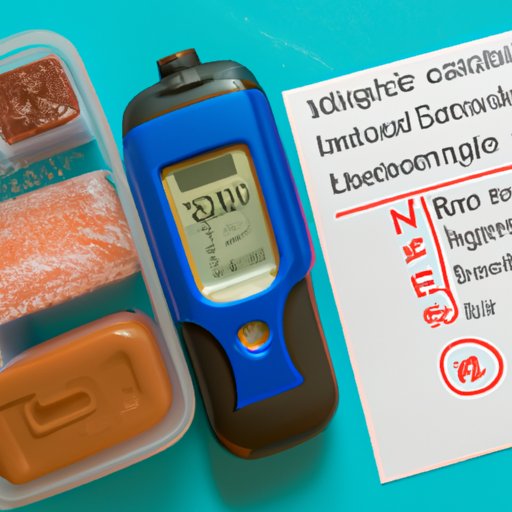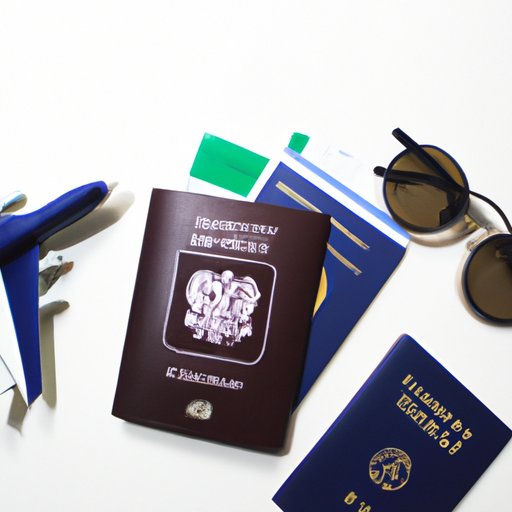Introduction
Travelling can be a stressful experience for anyone. But if you have diabetes and need to travel with insulin that needs to be refrigerated, it can be an even more daunting prospect. Knowing the basics of how to safely store and transport your insulin is key to having a successful and stress-free trip.
The purpose of this article is to provide an overview of how to travel with refrigerated insulin. We’ll cover topics such as understanding the basics of travelling with insulin, packing essentials, tips for carrying your insulin safely, storing and disposing of insulin while on the go, and resources to help make your trip easier and safer.
Preparation: Understanding the Basics of How to Travel with Insulin
When travelling with insulin, it’s important to understand the different types of insulin available and the various possible solutions for keeping your medication safe and secure. You also need to know your rights when travelling with refrigerated insulin.
Types of Insulin
There are two main types of insulin: short-acting and long-acting. Short-acting insulin is used to correct high blood sugar levels, while long-acting insulin is used to maintain normal blood sugar levels over time. Depending on your individual needs, you may need to bring both types of insulin with you while travelling.
Possible Solutions
Traveling with refrigerated insulin doesn’t have to be complicated. There are a few possible solutions that can make the process easier, such as bringing a cooler or using an insulated bag with a cold pack. Both options will keep your insulin at the right temperature for up to 24 hours.
Knowing Your Rights
It’s important to know your rights when travelling with refrigerated insulin. The U.S. Department of Transportation has issued guidelines for air travelers with disabilities. According to these guidelines, airlines must allow passengers to carry their own medical supplies, including insulin, on board the aircraft. However, passengers must declare these items to airline personnel prior to boarding.

Packing Essentials: What You Need to Know About Refrigerating Insulin
When travelling with refrigerated insulin, it’s important to have the necessary supplies to keep your medication safe and secure. You’ll need to consider what type of refrigeration option works best for you, as well as what other supplies you may need.
Necessary Supplies
In addition to your insulin, you’ll need to bring along the following items: a thermometer to monitor the temperature of your insulin; syringes or pens for administering the insulin; and alcohol wipes for cleaning the injection site. You may also want to bring along a doctor’s note stating that you need to carry your insulin with you.
Refrigeration Options
When travelling by plane, it’s important to use an insulated bag with a cold pack to keep your insulin at the right temperature. If you’re travelling by car, you can use a cooler with frozen ice packs. If you’re travelling internationally, you may want to consider purchasing a portable refrigerator that plugs into a wall outlet or car cigarette lighter.

Tips for Carrying Your Insulin Safely During Travel
When travelling with refrigerated insulin, it’s important to take certain precautions to ensure that your medication stays safe and secure. Here are some tips for carrying your insulin safely during travel.
Temperature Control
It’s essential to keep your insulin at the right temperature while travelling. Insulin should be stored between 36°F and 46°F (2°C and 8°C). To ensure that your insulin stays at the correct temperature, use an insulated bag with a cold pack and check the temperature regularly with a thermometer.
Avoiding Contamination
It’s important to avoid contamination when handling your insulin. Always wash your hands before and after handling the insulin, and don’t share needles or syringes with anyone else. Also, make sure to keep your insulin away from direct sunlight and extreme temperatures.
Storing Insulin Properly
When not in use, it’s important to store your insulin properly. Keep the insulin in its original packaging and store it in a cool, dry place. Do not freeze the insulin, as this can damage the integrity of the medication.
Storing and Disposing of Insulin While on the Go
When travelling with refrigerated insulin, it’s important to know how to properly store and dispose of the insulin. Here are some tips for storing and disposing of insulin while on the go.
Storing Insulin in Hot Climates
If you’re travelling to a hot climate, it’s important to take extra precautions to keep your insulin at the correct temperature. Consider using a portable refrigerator and/or an insulated bag with a cold pack. Additionally, you may want to bring along extra supplies, such as insulin pens and syringes, and check the temperature of your insulin frequently.
Disposal Options
When disposing of insulin, it’s important to do so safely and responsibly. Never flush insulin down the toilet or throw it in the trash. Instead, contact your local waste disposal facility to find out the proper disposal methods for your area.

Resources to Help Make Your Trip Easier and Safer
Travelling with refrigerated insulin can be a challenging task, but there are resources available to help make the process easier and safer. Here are some resources to consider.
Online Resources
The internet is a great resource for finding information about travelling with refrigerated insulin. The American Diabetes Association website has a wealth of information, including tips for packing and travelling, as well as advice on how to keep your medication safe and secure. The Juvenile Diabetes Research Foundation also has a helpful website with information and resources for travelling with diabetes.
Local Support Groups
Connecting with local support groups can be a great way to get advice on travelling with refrigerated insulin. These groups can provide valuable insight and resources, such as tips for packing and travelling, as well as information on local laws and regulations regarding the transportation of medication.
Conclusion
Travelling with refrigerated insulin can be a daunting task, but it doesn’t have to be. With the right preparation and knowledge, you can make sure your medication stays safe and secure during your travels. In this article, we’ve provided an overview of how to travel with refrigerated insulin, including understanding the basics, packing essentials, tips for carrying your insulin safely, storing and disposing of insulin while on the go, and resources to help make your trip easier and safer.
Remember to always keep your insulin at the correct temperature, avoid contamination, and store your insulin properly. And don’t forget to take advantage of the resources available to help make your trip easier and safer.
With the right preparation and knowledge, you can have a successful and stress-free trip while traveling with refrigerated insulin.
(Note: Is this article not meeting your expectations? Do you have knowledge or insights to share? Unlock new opportunities and expand your reach by joining our authors team. Click Registration to join us and share your expertise with our readers.)
